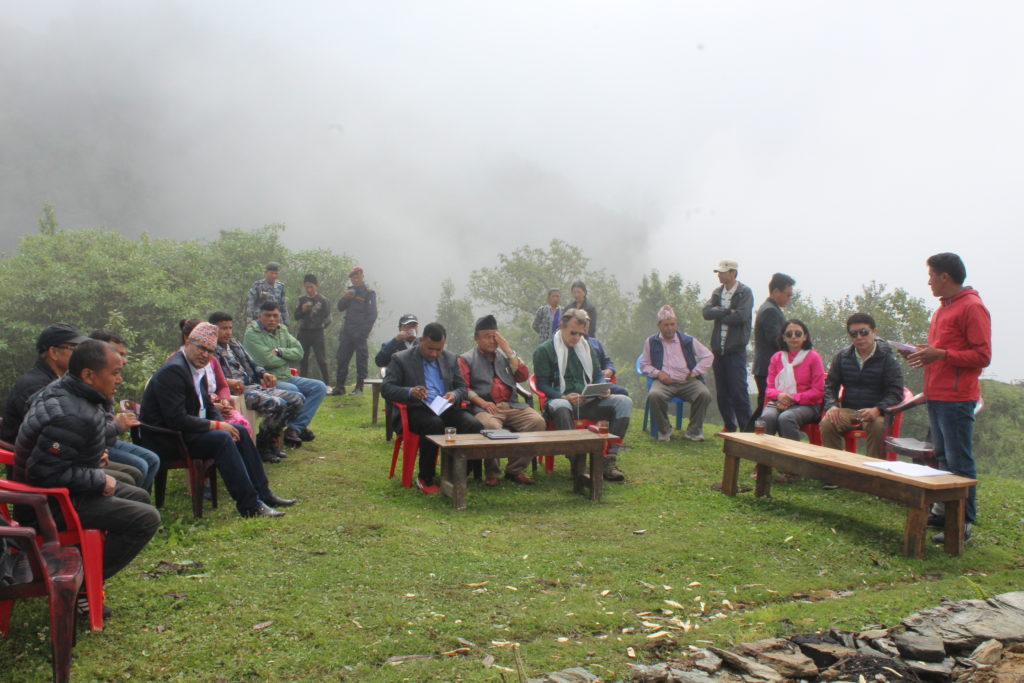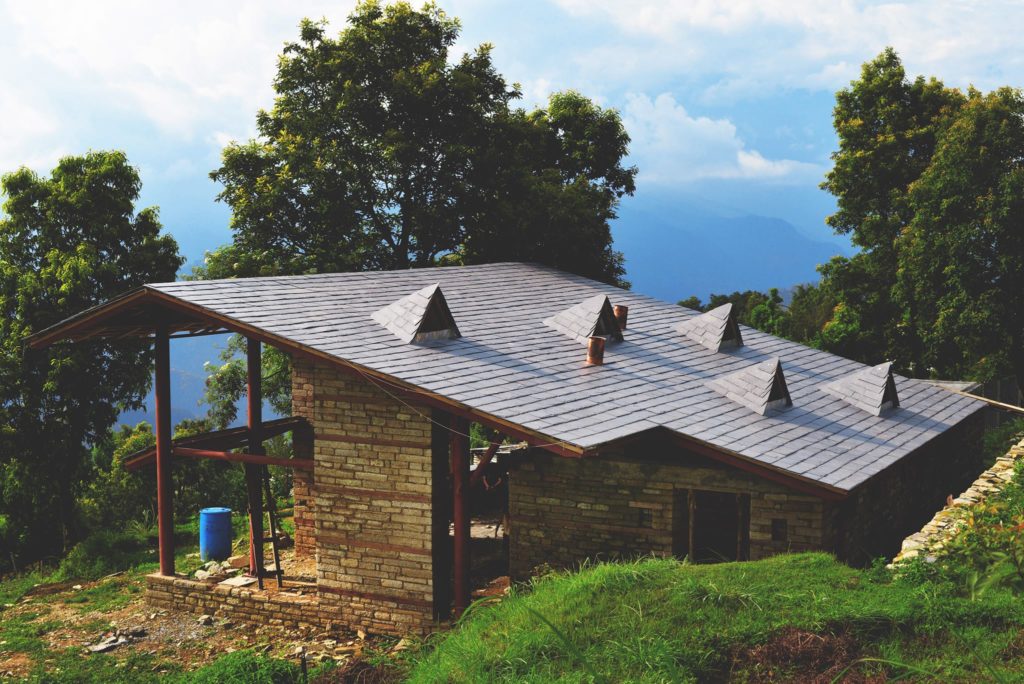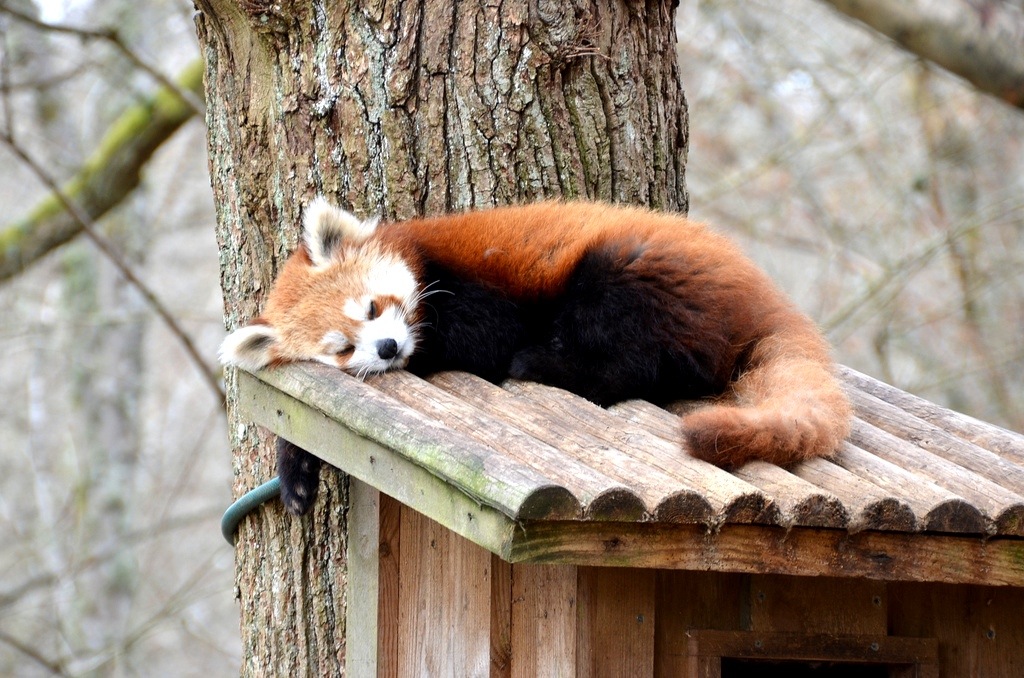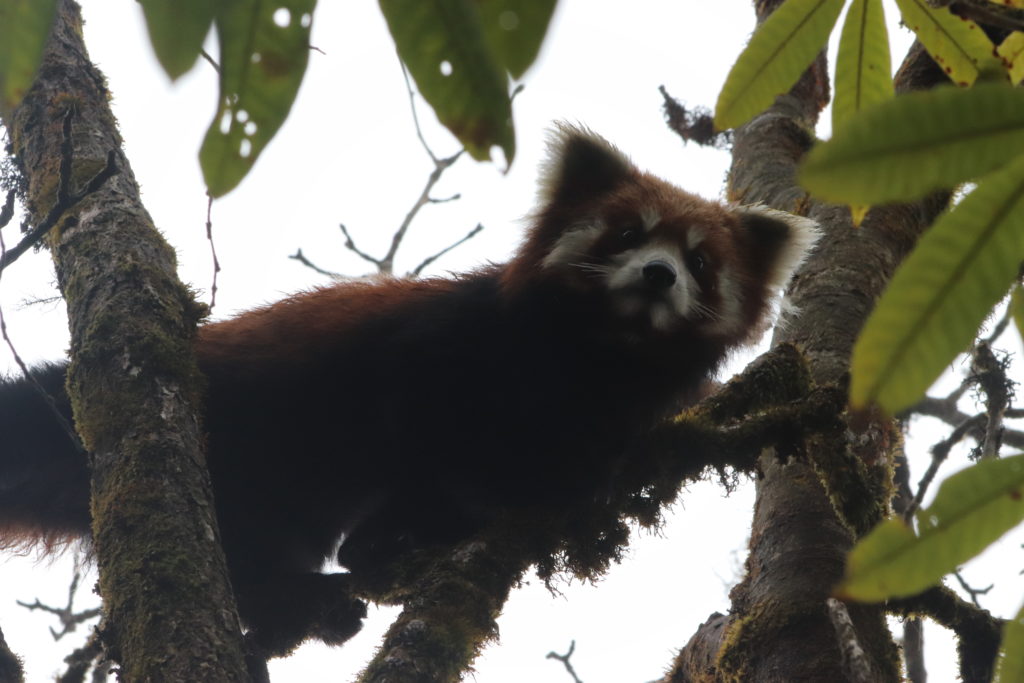
CONSTRUCTION HAS BEGUN ON NEPAL’S FIRST CENTER COMMITTED TO ALLEVIATING POVERTY AND ENSURING A SUSTAINABLE FUTURE FOR PEOPLE AND RED PANDAS.
On May 24th, Ghanendra Maden, District Coordination Committee Chairperson for Taplejung district and Bam Bahadur Bhattarai, Vice-Chairperson of Phungling Municipality—the location of the project site—laid the foundation stone for the. Center for Conservation and Sustainable Living (CCSL).
Located at 2,620 meters above sea level, inside a community-managed forest in the Eastern Himalayas, the CCSL will be an education and resource center for environmental conservation, skill-building and sustainable livelihoods. It will also be a demonstration site for green and eco-friendly construction practices. The CCSL is expected to be operational by 2021.
The ceremony was attended by local stakeholders and authorities, and Red Panda Network (RPN) Country Director, Ang Phuri Sherpa, and Program Development Manager, Haris Rai.
“This is a big milestone for us, “ said Sherpa. “The center will be iconic of our commitment to building a sustainable future for the people and wildlife of the Himalayas.”

RPN team with local stakeholders at foundation stone-laying ceremony.
RPN and local partner organization, Himali Conservation Forum, will be implementing the project—made possible by a partnership with Swedish zoo and non-profit foundation, Nordens Ark, and financial support from Svenska Postkodlotteriet. The Sustainable Mountain Architecture (SMA), a non-profit organization working on sustainable design and improving building methods in the mountains will be leading the design and construction of the center.
The Panchthar-Ilam-Taplejung (PIT) Corridor of the Eastern Himalayas is a very important region, containing approximately 25% of Nepal’s red panda population. Unfortunately, the forests of the PIT Corridor are quickly disappearing.
Red panda habitat expands throughout the montane forests of Nepal where overutilization of resources by local communities is causing forest degradation and fragmentation. This is driven by poverty and insufficient access to alternative resources, clean energies and improved technologies.
 Home in Deumadi, Nepal under construction by SMA.
Home in Deumadi, Nepal under construction by SMA.
 Red panda at Nordens Ark zoo.
Red panda at Nordens Ark zoo.
Since 2007, RPN has been working closely with the communities of the PIT Corridor to find solutions to the problems that threaten the future of red pandas and people. The CCSL is the centerpiece of this effort. It will improve local living standards by diversifying livelihood opportunities through capacity-building trainings on topics such as sustainable energy use, organic farming, Non-timber Forest Product (NTFP) and Medicinal and Aromatic Plant (MAP) cultivation, handicraft production, sustainable herding, nature guide and ecotrek leadership, homestay management and bio-briquette production. The center will also provide lodging and accommodations for our red panda ecotrippers and other ecotourists and travelers.
 5% of purchases of BNF's strawberry mint kombucha will support Red Panda Network's mission to conserve red pandas in the wild.
5% of purchases of BNF's strawberry mint kombucha will support Red Panda Network's mission to conserve red pandas in the wild.
Building materials will be locally sourced and during construction, locals will learn sustainable building and construction techniques. The center will be earthquake resistant and the building will feature rainwater harvesting, improved cooking stoves, solar technologies, ecological-sanitation toilets, sustainable waste management and biogas plants. The center's premises will also include demonstration nurseries of organic vegetables, NTFPs and MAPs.
“Our goal is for the center to not only attract ecotourists to the area but also encourage sustainable management of forest resources by the local people,” said Maden. “We are committed to ensuring smooth construction and long-term operations of the CCSL.”
